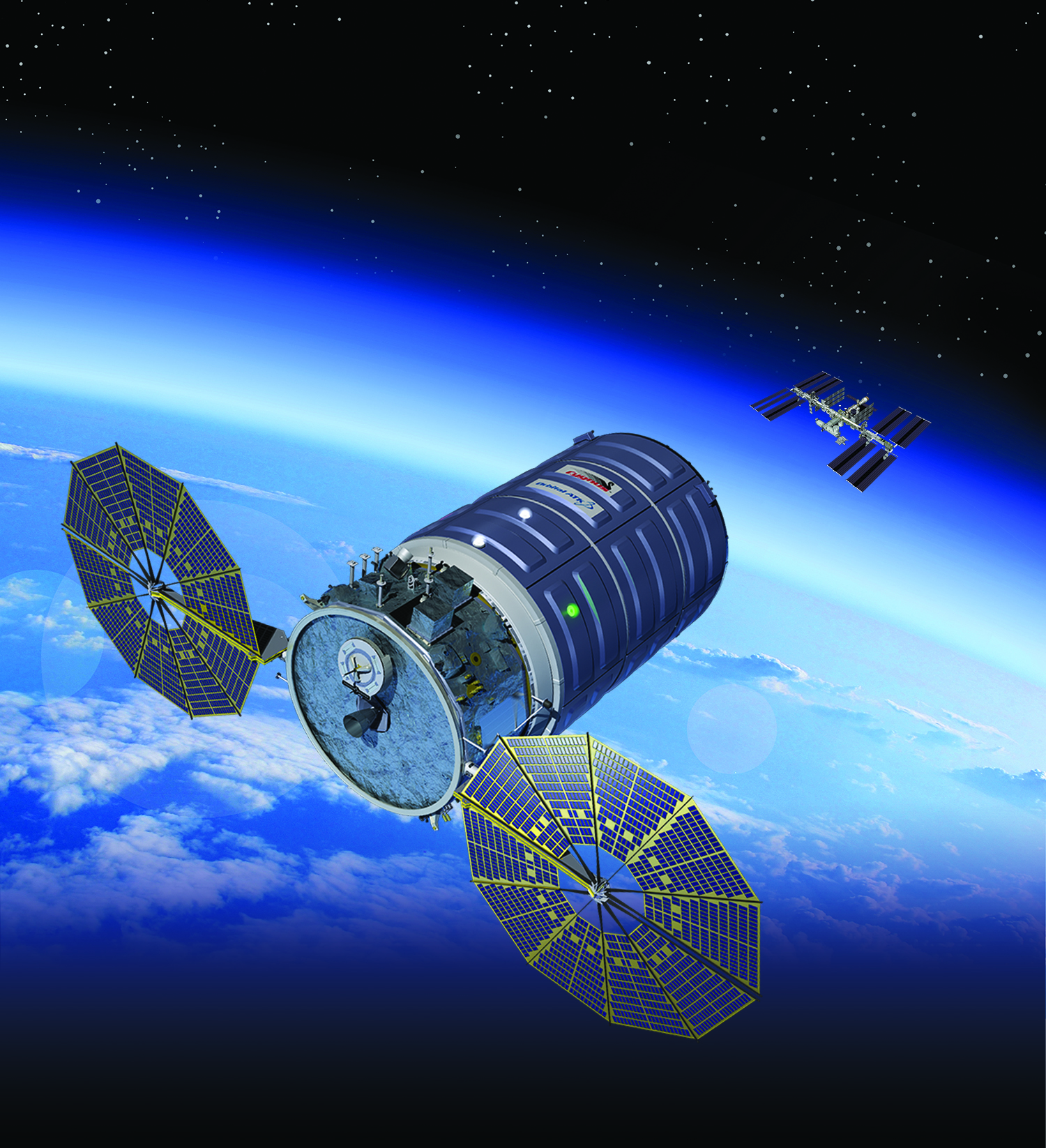NASA commercial partner Orbital ATK is targeting Thursday, Dec. 3, for the launch of its fourth contracted mission to the International Space Station under the agency’s Commercial Resupply Services contract. NASA Television coverage of the launch begins at 4:30 p.m. EST.
The company’s Cygnus spacecraft is set to lift off on a United Launch Alliance Atlas V rocket at 5:55 p.m., the beginning of a 30-minute launch window, from Space Launch Complex 41 on Cape Canaveral Air Force Station in Florida. Cygnus will carry more than 7,000 pounds of science and research, crew supplies and vehicle hardware to the orbital laboratory to support dozens of approximately 250 science and research investigations that will occur during Expeditions 45 and 46. This first Cygnus mission using the Atlas V launch system provides increased performance and flexibility to the Orbital ATK cargo delivery service.
In addition to launch coverage, NASA TV will air three briefings Wednesday, Dec. 2: several experts involved in the launch and mission will host an interactive discussion with the agency’s social media followers from 9 to 10:30 a.m.; at 1 p.m., scientists and researchers will discuss some of the investigations to be delivered; at 2 p.m., mission managers will host a prelaunch news conference. A post-launch briefing will be held approximately two hours after launch. All briefings will air live on NASA TV and the agency’s website.
The new experiments arriving to the orbiting laboratory will challenge and inspire future scientists and explorers. Science payloads will offer a new life science facility that will support studies on cell cultures, bacteria and other microorganisms; a microsatellite deployer and the first microsatellite that will be deployed from the space station; and experiments that will study the behavior of gases and liquids, clarify the thermo-physical properties of molten steel, and evaluate flame-resistant textiles.
Cygnus also will deliver replacement cargo items including a set of Microsoft HoloLens devices for use in NASA’s Sidekick project, a safety jet pack astronauts wear during spacewalks known as SAFER, and high pressure nitrogen and oxygen tanks to plug into the station’s air supply network.
This will be the first flight of an enhanced Cygnus spacecraft to the station. The cargo freighter now features a greater payload capacity, new UltraFlexTM solar arrays and new fuel tanks. Cygnus’ pressurized cargo module has been extended and increases the spacecraft’s interior volume capacity by 25 percent, enabling more cargo to be delivered with each mission.
A Dec. 3 launch will result in the Cygnus spacecraft arriving at the space station on Sunday, Dec. 6. NASA crew members Kjell Lindgren and Scott Kelly will use the station’s Canadarm2 robotic arm to reach out and capture Cygnus at approximately 5:30 a.m. NASA TV coverage of rendezvous and grapple of Cygnus will begin at 4 a.m. Cygnus will be the first cargo ship to be berthed to the Earth-facing port on the Unity module. Coverage of Cygnus’ installation will begin at 7:15 a.m.
The spacecraft will spend more than a month attached to the space station before its destructive reentry into Earth’s atmosphere in January 2016, disposing of about 3,000 pounds of trash.
If the launch does not occur on Dec. 3, the next launch opportunity would be at 5:33 p.m. on Friday, Dec. 4, resulting in a grapple and berthing on Dec. 7 or Dec. 8.
Media at the agency’s Kennedy Space Center in Florida also will have the opportunity to participate in tours on Tuesday, Dec. 1. Journalists will see the progress being made on NASA’s Commercial Crew Program, which will return astronaut launches from U.S. soil to the space station, as well as the ground systems to support the Space Launch System rocket for missions to deep space and eventually on the journey to Mars. The deadline for media to apply for accreditation has passed. For more information about media accreditation, contact Jennifer Horner at 321-867-6598 or jennifer.p.horner@nasa.gov.
For an updated schedule of prelaunch briefings, events and NASA TV coverage, visit:
http://go.nasa.gov/1MzW1Cj
For NASA TV schedule and video streaming information, visit:
https://www.nasa.gov/nasatv
For launch countdown coverage, NASA’s launch blog, and more information about the mission, visit:
https://www.nasa.gov/orbitalatk
For more information about the International Space Station, visit:
https://www.nasa.gov/station
-end-
Stephanie Schierholz
Headquarters, Washington
202-358-1100
stephanie.schierholz@nasa.gov
George Diller
Kennedy Space Center, Fla.
321-867-2468
george.h.diller@nasa.gov
Sean Elizabeth Wilson
Orbital ATK, Inc., Dulles, Va.
832-415-1254
sean.wilson@orbitalatk.com

























